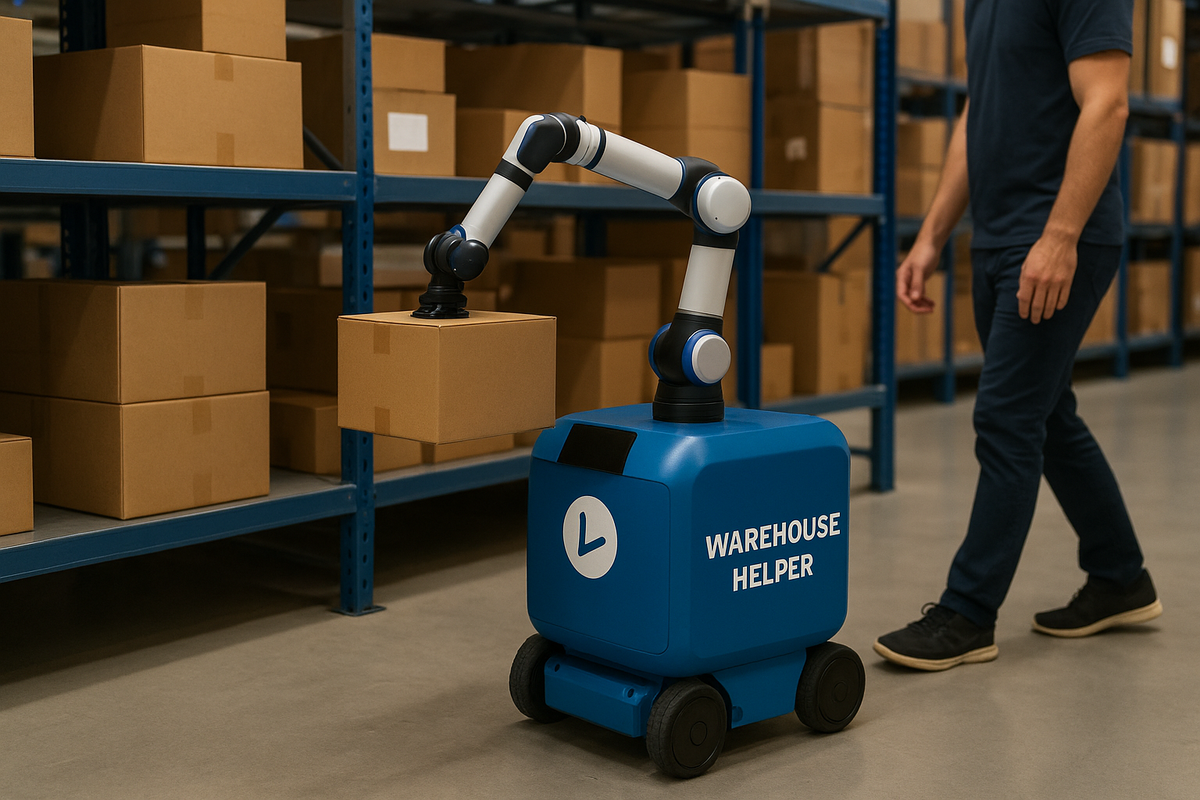Meet My Futuristic “Warehouse Helper” — Automation for the Rest of Us
Inspired by Amazon’s Blue Jay, I designed my own smaller-scale robot: a smart, space-saving “Warehouse Helper” built for everyday businesses like mine. It’s the affordable future of warehouse automation — practical, efficient, and human-friendly.

🏭 When Big Tech Meets Small Warehouses
As a small warehouse owner, I’ve always admired Amazon’s innovation — especially their new Blue Jay system that combines multiple robotic arms into one super-efficient workspace. But let’s be honest: few small operations can afford multi-million-dollar robotic platforms.
So I asked myself — what if I could design something like Blue Jay, but smaller, modular, and affordable? That’s how the idea for my “Warehouse Helper” was born.
🤖 The Concept: “Warehouse Helper”
Imagine a compact, mobile robotic assistant that can do 70% of what a full-scale industrial robot does — without needing a robotics engineer to run it.
My Warehouse Helper looks like a mini version of Blue Jay: a blue cube-shaped base on wheels with a single articulated arm that can rotate 360°. It uses computer vision to recognize boxes, QR codes, and shelves. The arm ends with a suction grip that can pick up items up to 15 kg — perfect for most e-commerce packages or parts bins.
The robot can roll between aisles, scan barcodes, and place items in the right zone automatically. A small onboard LiDAR keeps it from bumping into people or shelves.
🧠 The Brain Behind It
Instead of using Amazon’s AI infrastructure, my robot would run on an open-source edge AI model like Jetson Orin Nano. It learns warehouse layouts over time and optimizes travel routes just like a human worker does after a few weeks on the job.
And here’s my favorite part — every “Helper” can talk to another via Wi-Fi mesh. That means if one robot’s busy, another one automatically takes over the next pick-up task.
🧰 Key Features
- Multi-function Arm: Picks, stows, scans, and sorts.
- Mobile Base: Compact wheels for tight aisles.
- Adaptive AI: Learns item patterns and restock frequency.
- Human Collaboration Mode: Automatically pauses when a worker approaches.
- Voice Command: You can literally say, “Helper, pick order #B231,” and it goes.
💡 Why It’s Perfect for Small Businesses
The goal isn’t to replace people — it’s to reduce burnout. In small warehouses, repetitive lifting and labeling consume too much time. The Warehouse Helper can handle those tasks, while my staff focus on packing, quality checks, and customer service.
It also reduces space needs by eliminating stationary robotic cells — everything’s mobile, modular, and scalable.
🔮 Looking Ahead
The big takeaway from Amazon’s Blue Jay is clear: multi-task robots are the future. But the real magic will happen when smaller players get access to this technology — tools that make us more efficient without needing a robotics team or a massive budget.
If I could deploy three of these Warehouse Helpers tomorrow, I’d have a near-automated facility running 24/7, seamlessly syncing data with my online store.
That’s the future I’m building toward — one smart little helper at a time.



